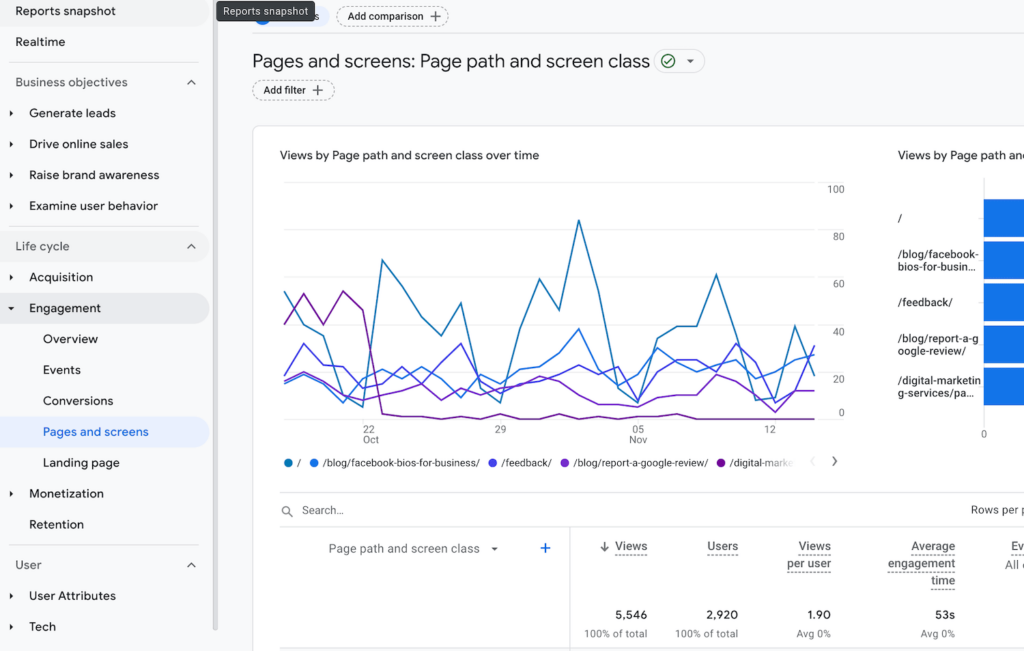Revealing the 'Secondary Dimension' in Google Analytics: What You Need to Know
Revealing the 'Secondary Dimension' in Google Analytics: What You Need to Know
Blog Article
Navigating the Midst of Second Dimension in Google Analytics: A Thorough Expedition on Its Capability
Additional dimensions, though relatively straightforward at very first look, harbor a wide range of untapped potential waiting to be taken advantage of. As we get started on this trip to check out the nuanced performance of secondary dimensions, we will uncover just how this attribute can illuminate patterns, introduce relationships, and eventually lead the method for notified decision-making in the electronic landscape (what is a “secondary dimension” in google analytics?).
Understanding Secondary Dimensions in Google Analytics

Understanding just how additional dimensions work is vital for leveraging the complete power of Google Analytics. These measurements aid you respond to more complicated concerns regarding customer habits and the efficiency of your website content and marketing efforts. You can use additional dimensions to analyze which web browsers or gadgets are most typically made use of by site visitors that make an acquisition, or to compare the bounce rates of various traffic resources. By incorporating main metrics with secondary measurements, you can acquire beneficial understandings that drive educated decision-making and optimization methods - what is a “secondary dimension” in google analytics?.
Leveraging Secondary Dimensions for Data Evaluation
Structure upon the foundational understanding of just how additional measurements boost information evaluation in Google Analytics, the utilization of these added layers of details becomes vital in extracting important insights for informed decision-making and optimization techniques. By leveraging second measurements, experts can delve much deeper into the efficiency metrics by including even more context to the primary measurements, hence uncovering covert patterns and relationships that might not be obvious at initial glance. This much deeper degree of analysis makes it possible for businesses to much better recognize individual behavior, determine trends, and identify locations for renovation.
In addition, second dimensions provide an even more thorough sight of the information, allowing for division based on various parameters such as demographics, devices, website traffic resources, and a lot more. This division facilitates an extra granular analysis, allowing organizations to customize their approaches and campaigns to details target market sections for boosted targeting and personalization. In essence, the calculated use secondary dimensions empowers companies to make data-driven choices that drive growth and success in the digital landscape.
Advanced Strategies for Additional Dimension Implementation
Exploring detailed approaches to harness the complete capacity of additional dimensions in Google Analytics boosts the depth and sophistication of data analysis for critical decision-making. One sophisticated method for carrying out additional measurements is the use of custom-made dimensions. Furthermore, combining secondary measurements with sophisticated sectors can provide also more granular insights by using multiple layers of segmentation to the data.
Interpreting Insights With Additional Dimensions

When analyzing insights through secondary measurements, it is vital to consider the context of the information and how various dimensions interact with each various other. As an example, understanding which certain website traffic resources cause higher conversion prices or recognizing which devices individuals choose for making purchases can supply actionable insights for optimizing advertising and marketing projects and enhancing general internet site performance. By thoroughly checking out the information with additional dimensions in mind, companies can make educated choices that drive purposeful outcomes and enhance their electronic existence.
Optimizing Efficiency With Additional Dimensions

One essential way to optimize efficiency with additional dimensions is by segmenting data extra granularly. This permits you to isolate particular aspects that might be affecting your metrics and obtain a far better understanding of what drives success or failure in your electronic efforts. For instance, by integrating additional measurements such as 'device group' and 'landing web page,' you can determine which gadget kinds are most effective view website for particular touchdown pages, enabling you to customize your approaches as necessary.
Furthermore, making use of additional measurements can assist you identify trends, patterns, and correlations that might not be evident when analyzing information with main measurements alone. This deeper level of evaluation can result in more educated decision-making and inevitably enhance the total performance of your internet site or digital marketing campaigns.
Verdict
To conclude, secondary dimensions in Google Analytics play an essential role in enhancing information evaluation and offering much deeper insights into website performance. By using innovative techniques and analyzing the data efficiently, services can enhance my sources their methods and enhance total performance. Comprehending the performance of secondary measurements is essential for making notified choices and driving success in the digital landscape.
By leveraging secondary measurements, analysts can delve much deeper into the efficiency metrics by including even more context web to the main dimensions, therefore revealing concealed patterns and correlations that might not be evident at first glimpse. One advanced strategy for applying secondary dimensions is the usage of customized dimensions.Having grasped advanced strategies like customized measurements and regex for secondary measurement application in Google Analytics, the next essential action is translating the valuable understandings derived via these advanced data segmentation methods. Analyzing understandings through additional dimensions involves assessing the relationships in between the second and main measurements picked, revealing patterns, patterns, and connections that may not be quickly evident when looking at the information in its entirety.When interpreting understandings with additional dimensions, it is necessary to take into consideration the context of the information and how various dimensions engage with each various other.
Report this page